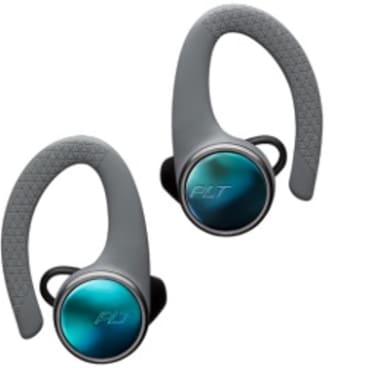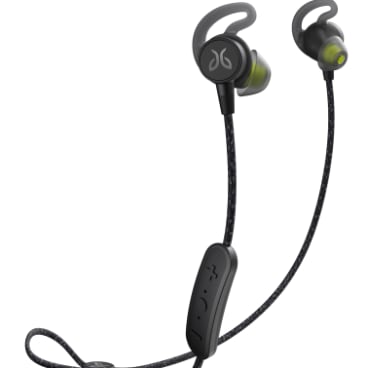
Although sound isn’t the most important thing with true wireless headphones, it still is an important thing, and the Soundsport Free have good enough audio quality that one could use them as their main headphones, not just for exercise. At that price, you’d want them to. While they don’t have the quality of full cans, the sound feels fuller, there’s plenty of bass without completely neglecting the high notes. It handles Pvris and Dance, Gavin, Dance just as well as Dario Marianelli and Kaki King.
Plus they have buttons on the units themselves, so you don’t have to rely on some ridiculous tapping system that never truly functions as intended.
Honourable mentions go to the Sony Sports WF-SP700N ($299.95) for including separate tips and fins for a better fit for more people, Beoplay E8 ($449) for including comply foam tips which adjust to the ear, and the Sennheiser Momentum True Wireless ($499.95), which just randomly fit really well. We also tested the Jaybird Run ($249.95) and Apple AirPods ($229).
Ear hook headphones

Plantronics BackBeat Fit 3100.
If you have ears that are hard to fit, then this is the style you want. Some units, like the Beats Powerbeats 3 ($259.95) and AudioFly 100W Mk2 ($179.99) still have an in-ear design, while others like the Plantronics BackBeat Fit 2100 ($159.99), and 3100 ($239.99) are more of an earbud allowing you to still easily hear the world around you. It was the BackBeat Fit 3100 that won us over this time, with superior comfort and fit.
One remarkable feature of the 3100s is that you can have either ear in and still have them work; so many other true wireless sets have a master and slave dynamic, forcing you to have (usually) the right ear in. The ability to have either ear in makes it easier to run with a friend with just one ear in, or, if you’re doing something hardcore like an ultra-marathon, switch between the two to make the most of the five-hour battery life in each (and extra ten hours in the charging case).
They’re also basically indestructible and are great for swimming. They stood up great in the test of Tough Mudder a few weeks back.
The sound quality is good, not great, but the safety, comfort and versatility is hard to go past.
Honourable mention goes to the AudioFly 100W, which has great audio quality, and is clearly designed by musicians as monitors for audio. However, they just block out far too much sound to be safe for exercise. Great for commuting, air travel, and music in general, but not for the purposes of this test. And it lost points for its proprietary charger.
Tethered headphones

Jaybird Tarah Pro
This is a hard category to pick a winner in, because it’s so established that everyone knows what to expect. However, the Jaybird Tarah Pro ($229.95) came out on top because it has a few welcome surprises.
While it did lose points for its reliance on a ridiculous and easily lost charging dongle, it’s hard to go past headphones with sound quality that good, and a 14-hour battery life which is almost unheard of in this style of headphones.
The other thing that gets them into the top spot is the versatility of fit: the ear pods can be rotated so you can wear them either hanging down or put the cord behind your ear for more security.
The shape of the more rigid ear fins and tips allow you to get a sense of the world around you, which is vital if you’re planning on taking them for a run outside, plus you can swim in them. That coupled with the battery life makes them perfect for triathletes, running in the rain, and people who forget to charge their headphones (or take them out of their pocket before putting them in the wash).
Honourable mention goes to the Bose Soundsport Wireless Pulse ($299.95) for having great sound quality and the ability to track your heart rate. We also tested the Bose Soundsport Wireless ($229.95), Plantronics BackBeat Fit 305 ($129.99), Sennheiser CX Sport ($199.95), Jaybird Tarah ($149.95) and Beoplay E6 ($379.95).
The author attended an event in New York as the guest of Jaybird.
Alice is a freelance journalist, producer and presenter.









 Add Category
Add Category